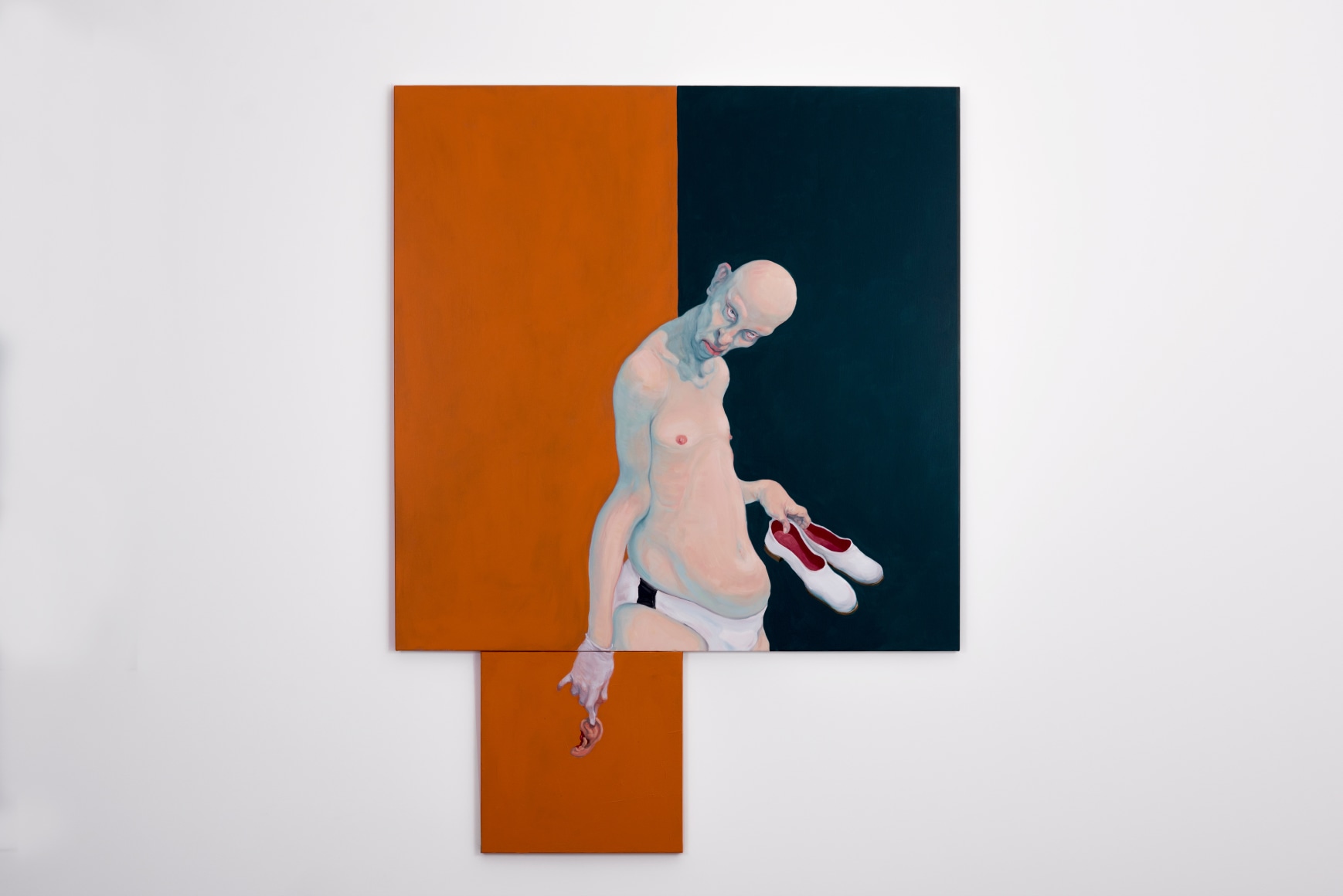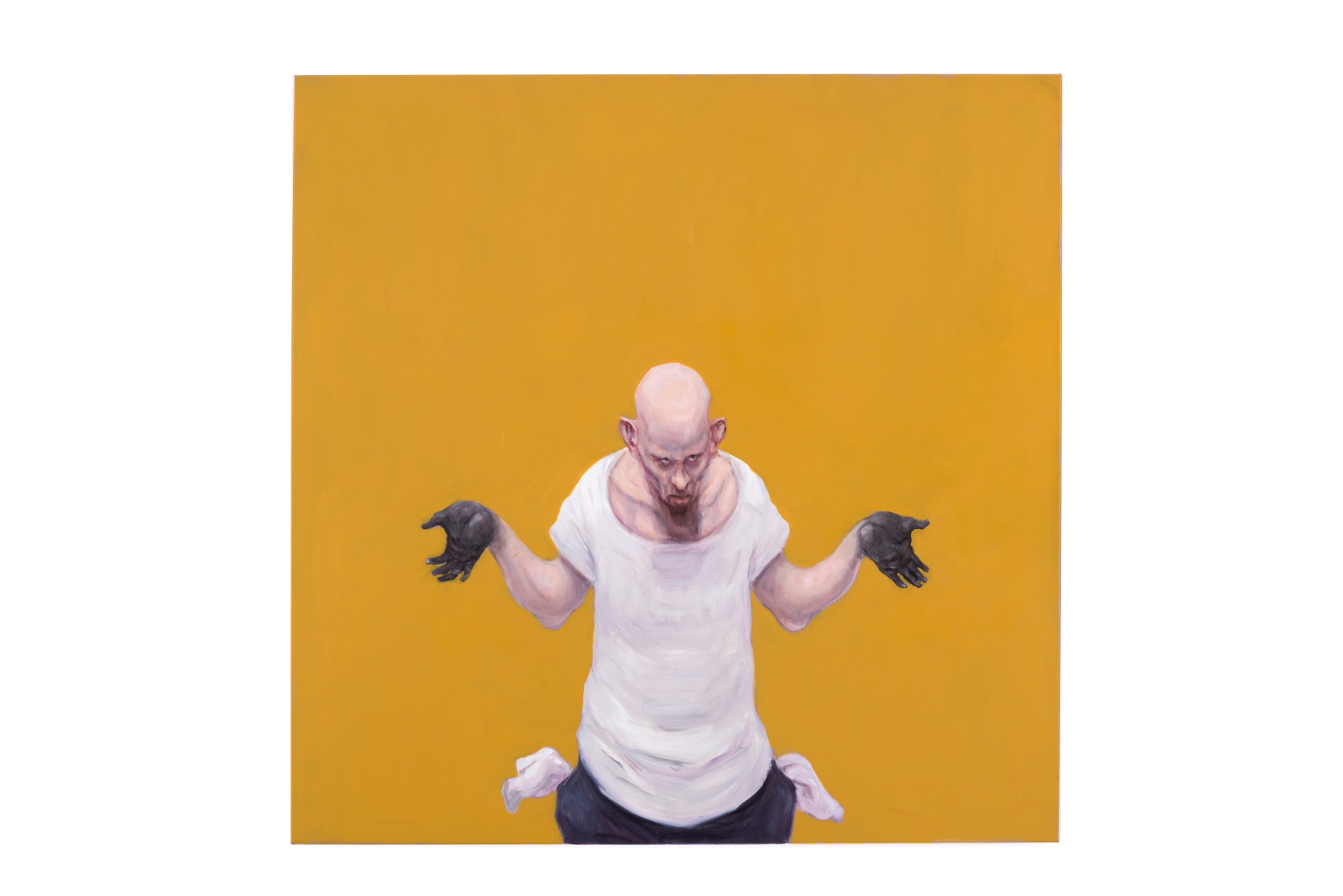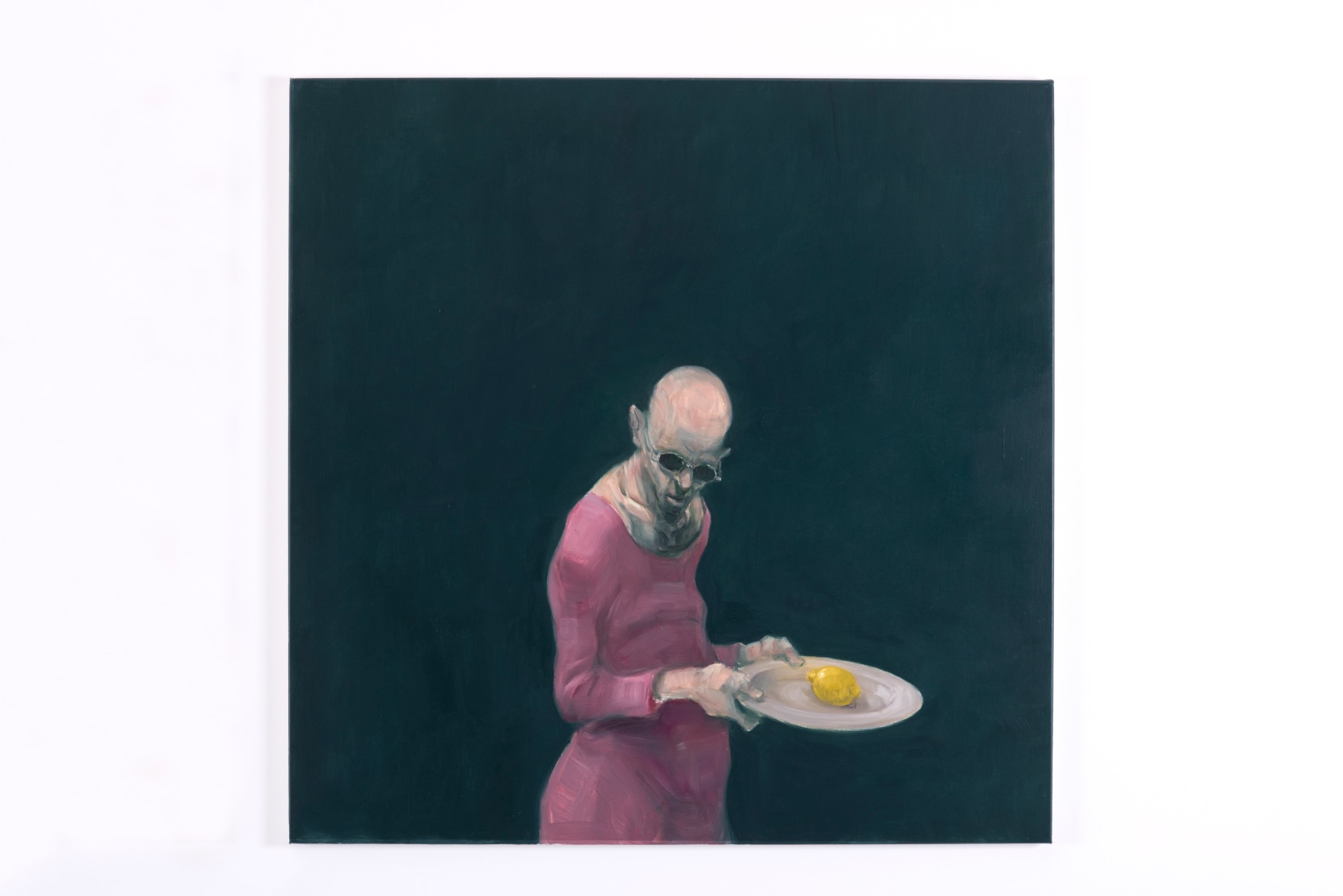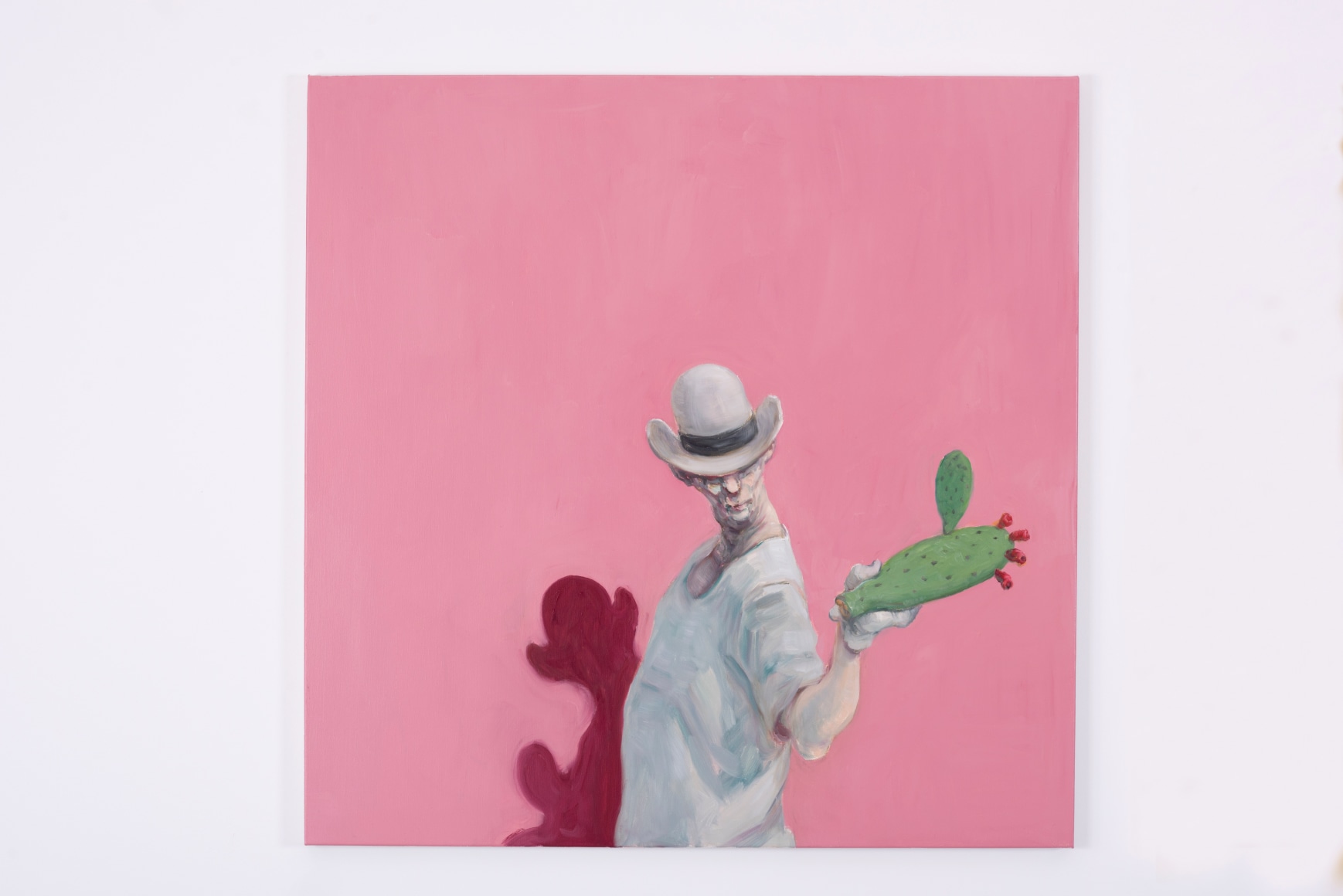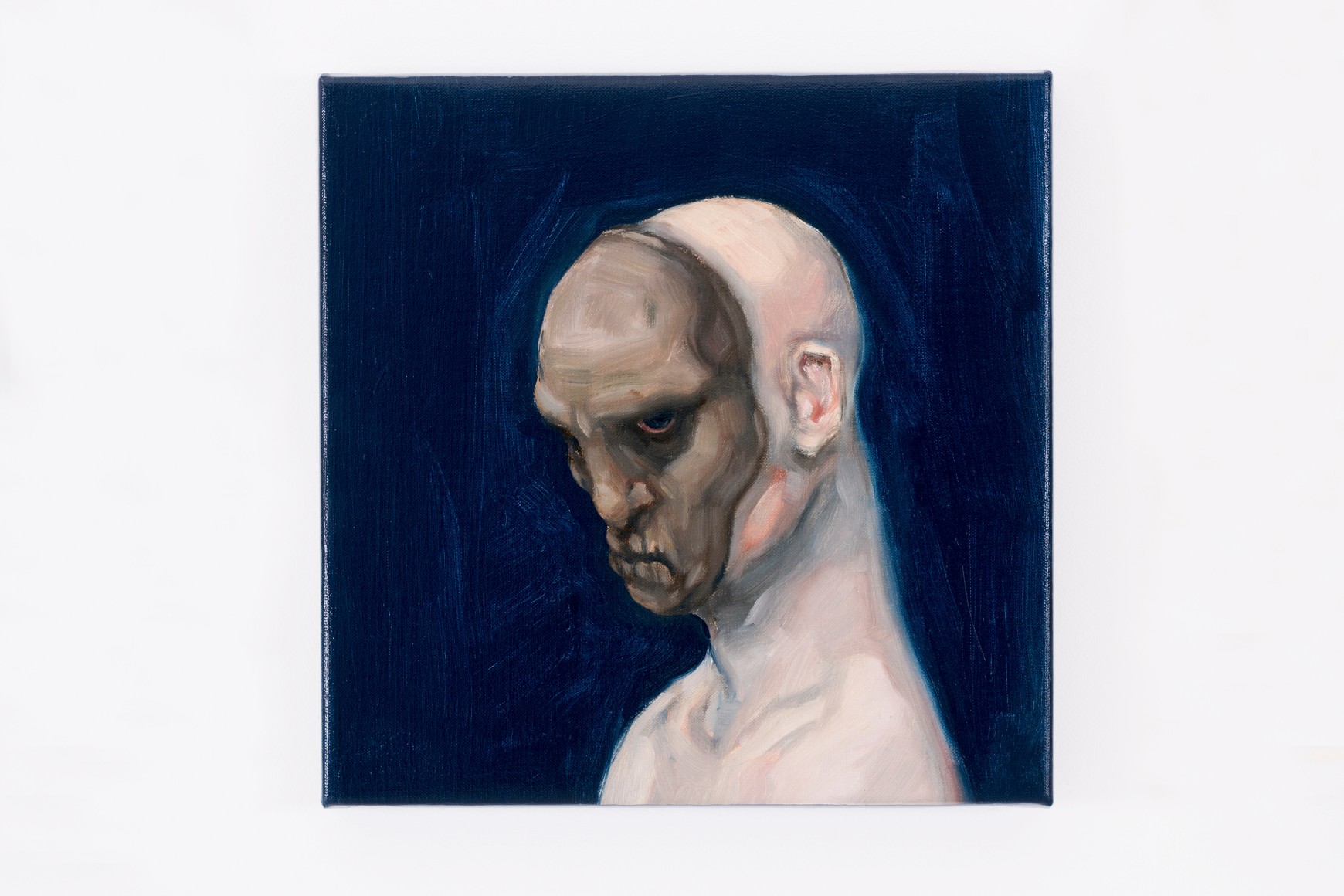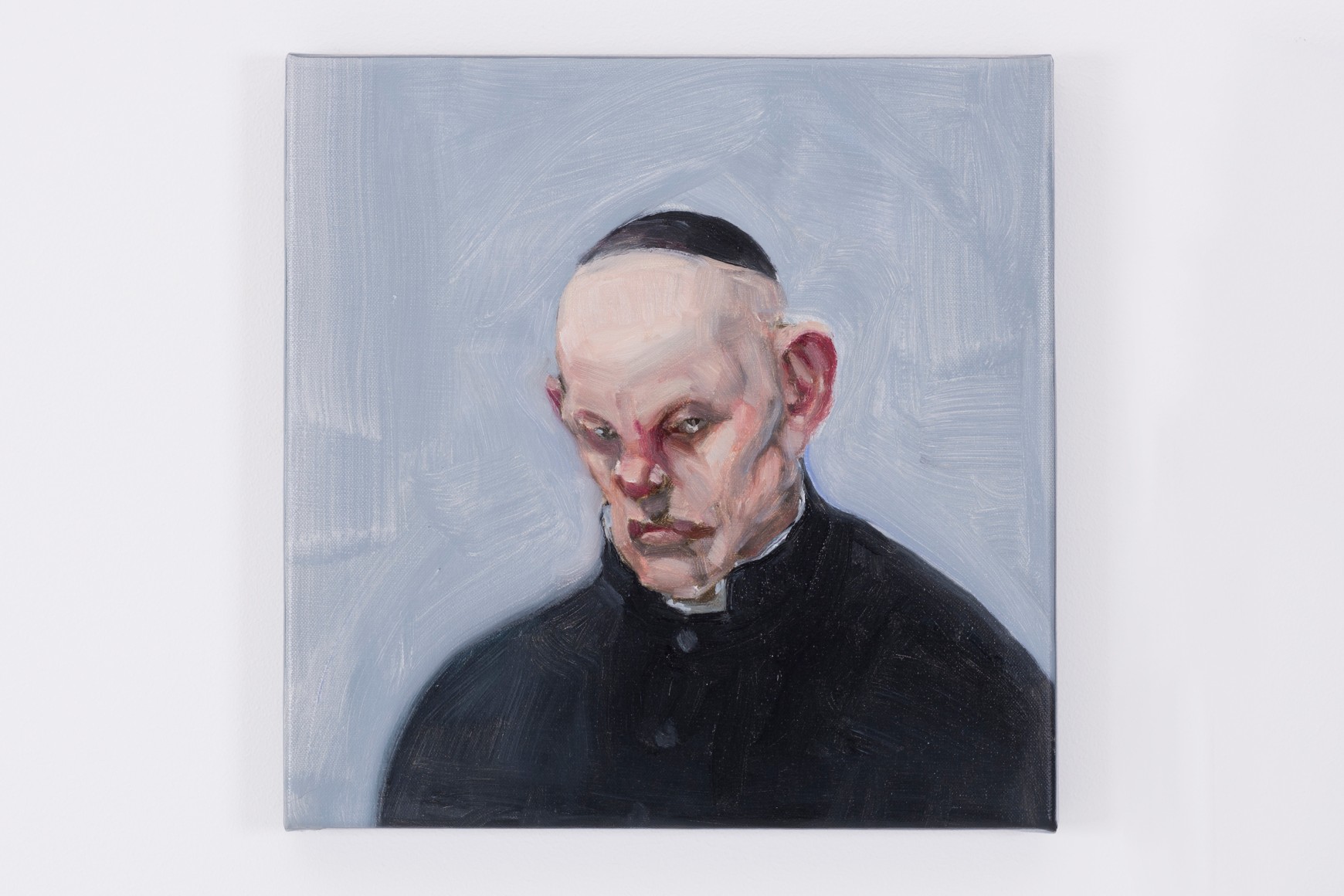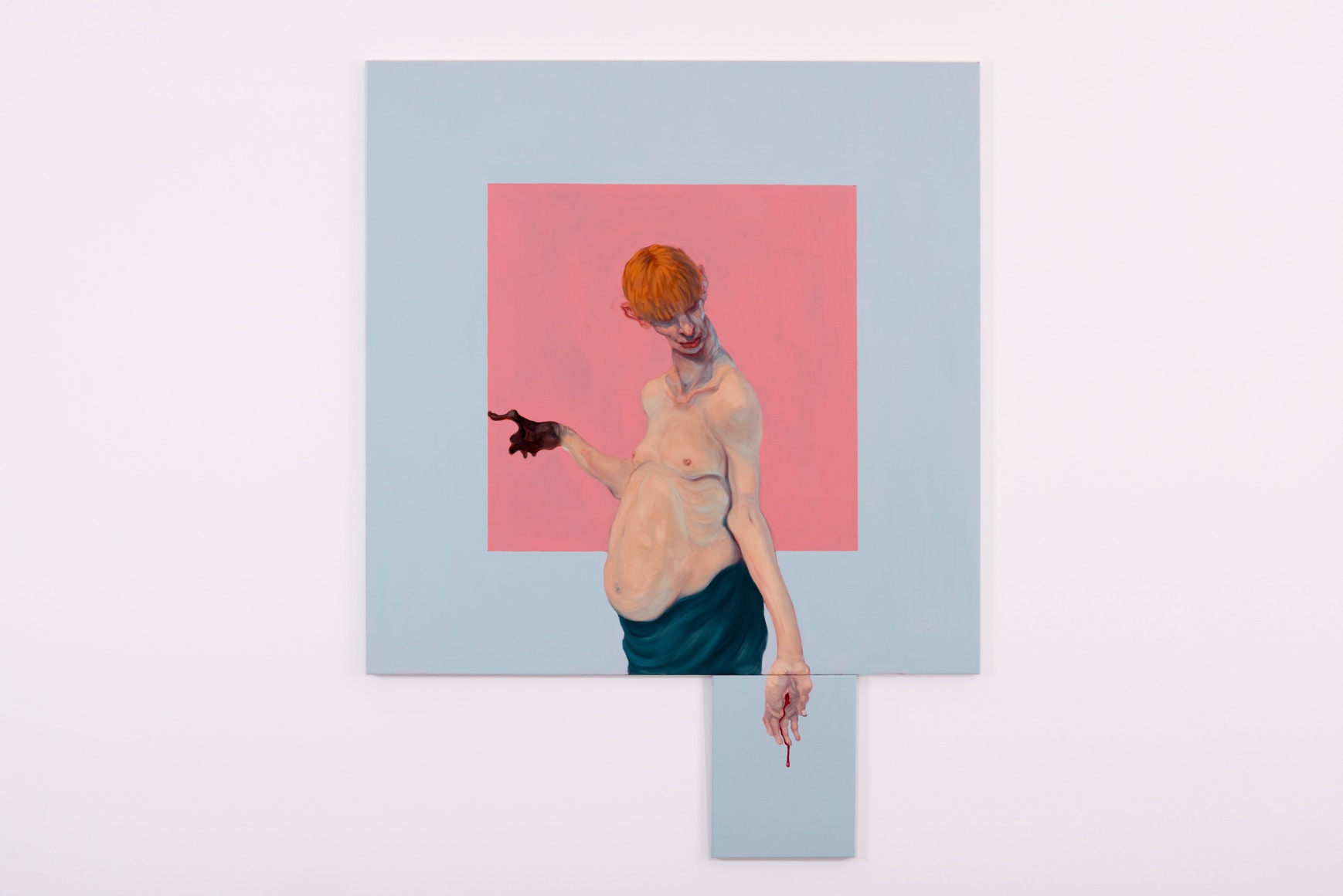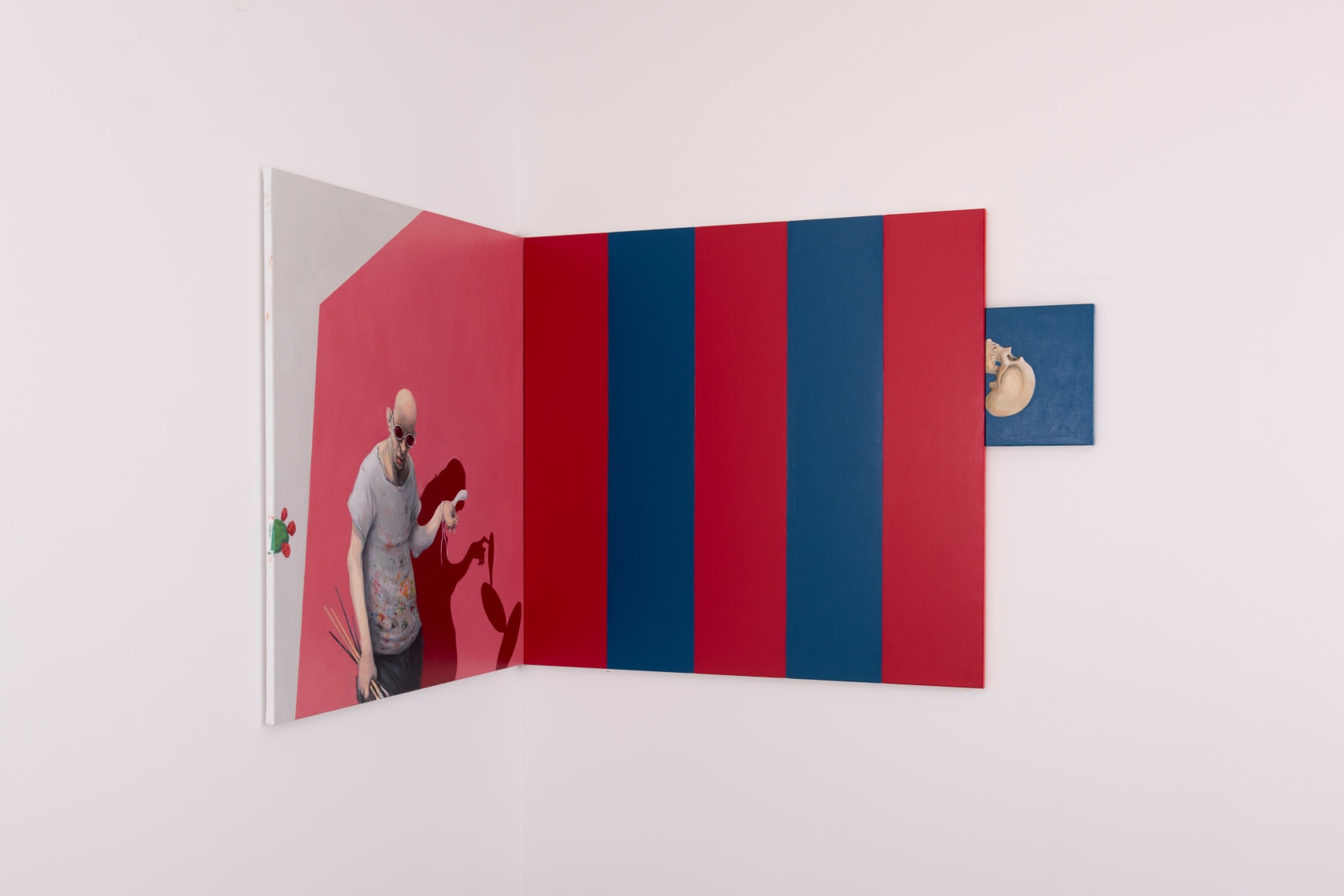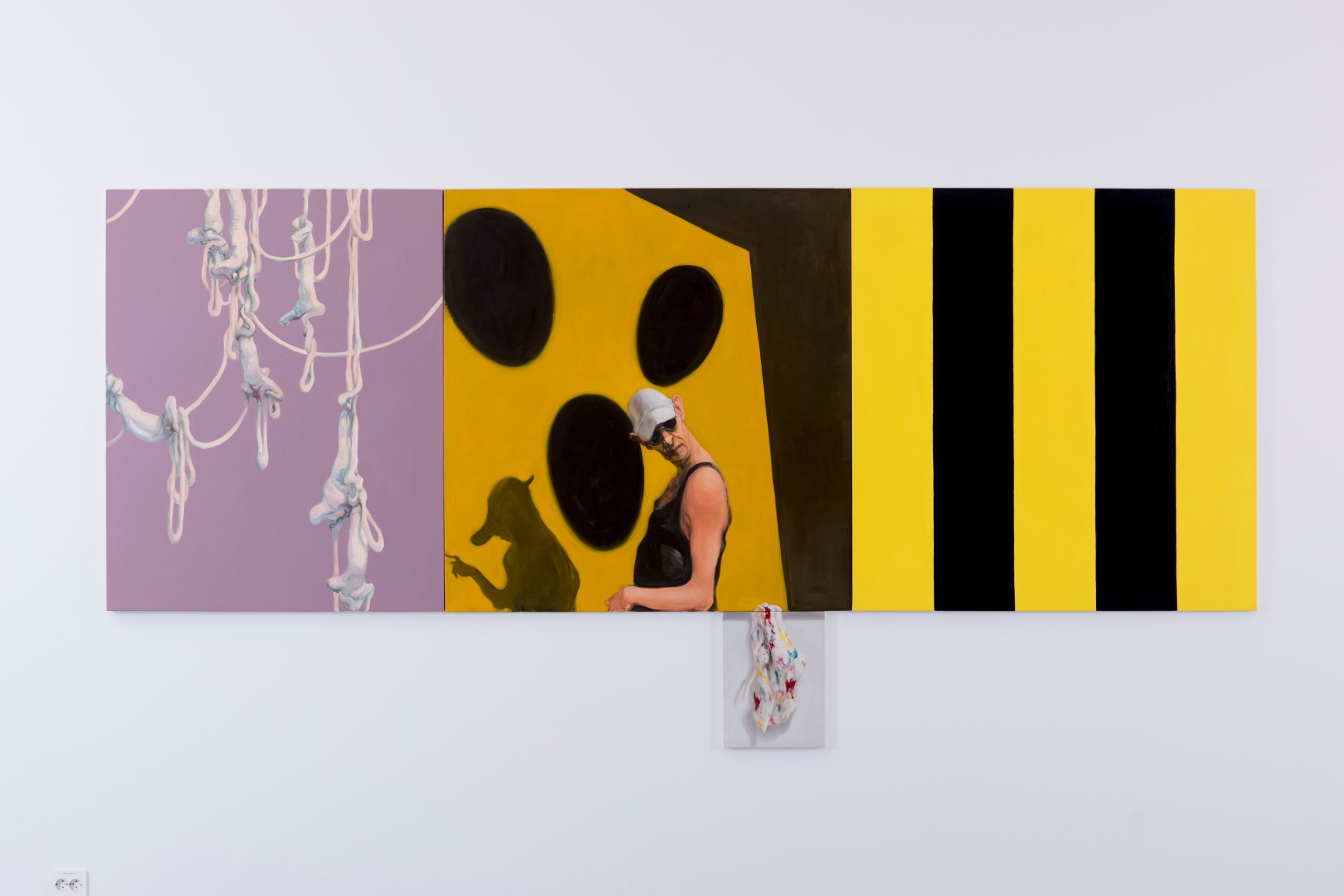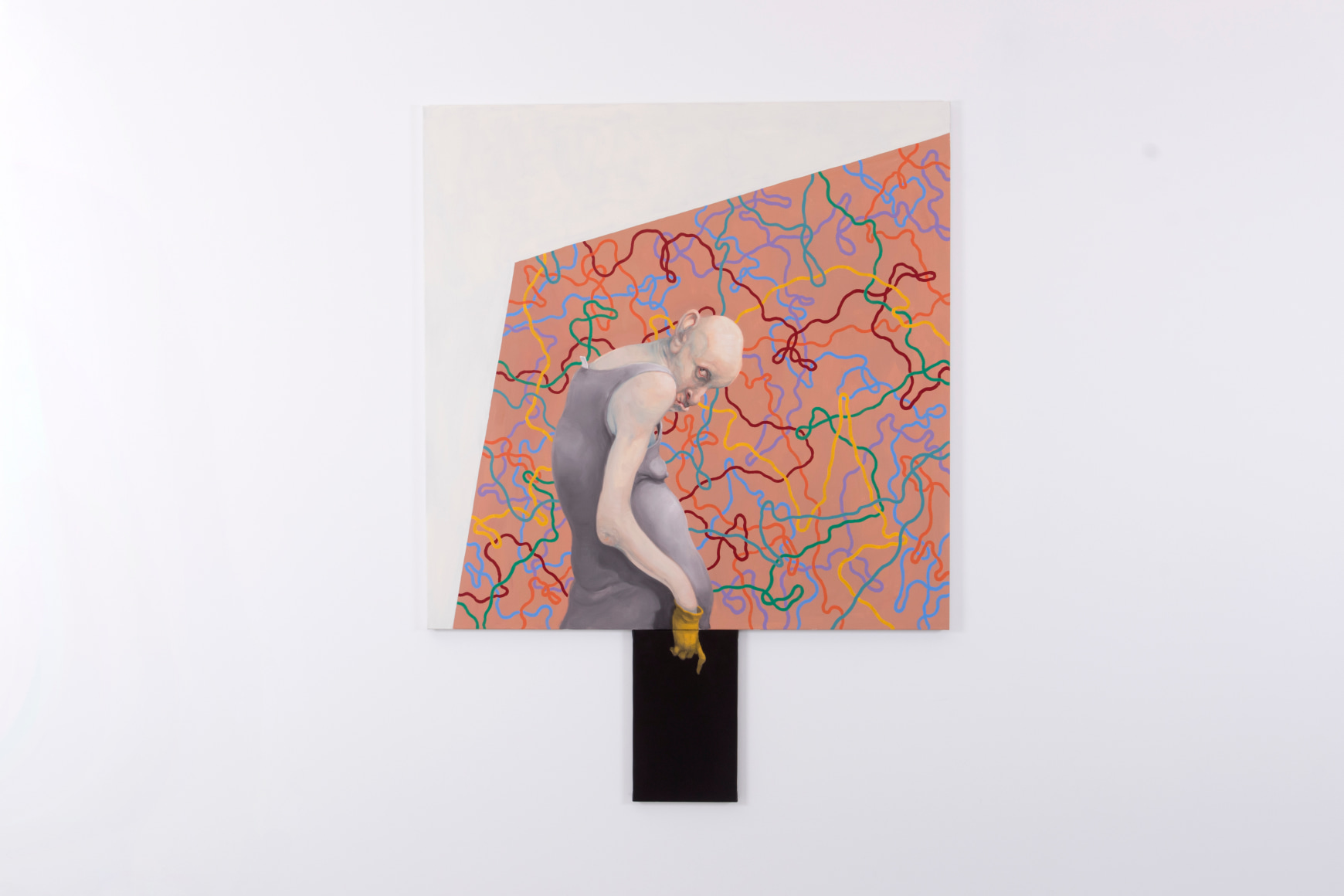Michael Kvium (1955) had his breakthrough immediately after his education at the Royal Danish Academy in Copenhagen, Denmark. Kvium works with a wide assortment of media: sculpture, theater, performance, audiovisual and painting.
Inspired by Francisco Goya’s ruthless realism, death acts as a continuous presence in Kvium’s works, with an underlying dystopian outlook at modern society. Kvium deals with heavy existential subjects, and he’s art shows uncompromising portrayals of the aspects of life that we rather hide than expose to observation. Wrapped in stereotypes, the people portrayed confronts the spectator with a paradoxical feeling of horror and fascination of the hideous and of nothingness. The result is a fear of emptiness and the lack of meaning or being create the foundation of a sublime redemption in the experience of his work.
Michael Kvium’s painterly staging contains associations to a theatre stage. As a theater plays a story that unfolds in the interval between the curtain rise and fall, human life unfolds between life and death. This is particularly visible in the way he creates different characters by giving them different clothes, make-up or characteristics of professions or historical people.
Nature is an ongoing focus in Kvium’s art, which counts human features, as well as human nature and it’s feelings. At the same time, the people portrayed have the same characteristic features with their pale white and hunched back bodies. The characters’ androgynous, hairless heads often have a certain similarity to the artist’s own features. His way of working is similar to the mannerist style, with stretched bodies and limbs, which emphasizes human emotion. In this manner Kvium can illustrate typical stereotypes of the modern human being, where it is their visual attributes that give them personalities. The stereotypes are often recognizable: tourists, nuns, clowns, ballet dancers and artists.
The characters are often isolated, even in images where there are multiple persons in action. The loneliness of each life gets enhanced when Kvium makes a painting of a couple, a pair of twins or a mother and child. He separates them by using body language, masks or glows, but at the same time the characters often looks strait to the viewer, whereas Kvium creates a feeling of a confrontation or mirroring. They are not alone, but lonely.

